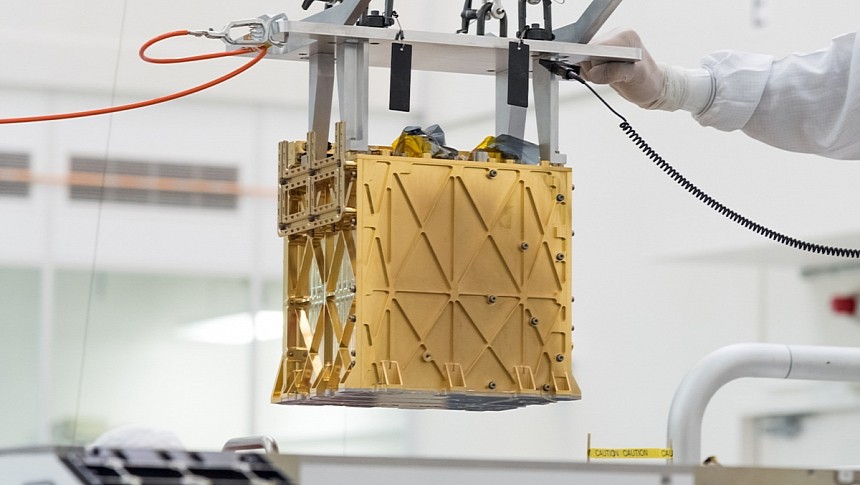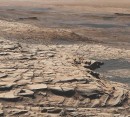If you've ever seen renderings of what Mars would look like if it were a lush, fertile jungle planet with vast oceans and a thick, luscious atmosphere, such a world could only exist if there was surplus, heck, even an abundance of oxygen which the Red Planet simply doesn't have. There's a strong case to be made that Mars once had these qualities. But thanks to NASA's Perseverance rover, there are approximately 122 more grams of oxygen on Mars than before the probe arrived. With its 16th and last round of o2 generation now complete, it's time to celebrate.
It's all thanks to a fundamentally simple but no less spectacular device inside NASA's latest Martian rover called the Mars Oxygen In-Situ Resource Utilization Experiment. Dubbed MOXIE for short and developed by the Massachusetts Institute of Technology, this toaster oven-sized instrument's only job is to intake samples of the inhospitable, carbon dioxide-rich Martian atmosphere and elementally separate its components into breathable oxygen. Using only what's available to collect on the Martian surface, without any assistance from facilities back on Earth, the MOXIE experiment lays the foundation for understanding the finer points of oxygen generation on the surface of another planet.
Of course, 122 grams of oxygen might not sound like anything impressive. But before you downplay the scale of the achievement, consider this. A supply of oxygen is enough to sustain a small dog's breathing for roughly 12 hours. By comparison, it's believed that Laika, the first animal in space, only survived for, at minimum, a few hours before overheating and deficits in oxygen supply caused the dog to perish before re-entering Earth's atmosphere. Now imagine how much o2 NASA could make with far larger equipment and substantially more storage capability. Suddenly, what sounds like a minuscule innovation among a sea of more exciting experiments tied to Perseverance seems considerably more substantial.
"MOXIE’s impressive performance shows that it is feasible to extract oxygen from Mars’ atmosphere – oxygen that could help supply breathable air or rocket propellant to future astronauts," explained NASA Deputy Administrator Pam Melroy. "Developing technologies that let us use resources on the Moon and Mars is critical to build a long-term lunar presence, create a robust lunar economy, and allow us to support an initial human exploration campaign to Mars." For the moment, the Perseverance rover has traveled roughly 12.7 miles (20.57 km) since landing on Mars in February 2021.
Though its MOXIE mission is at its end, the rover's mission to help NASA prep for future human-crewed missions to Mars will continue indefinitely until its nuclear isotope fuel one day expires. Safe to say, this won't be happening any time soon. Godspeed, Percy, you got the entire planet rooting for you.
Of course, 122 grams of oxygen might not sound like anything impressive. But before you downplay the scale of the achievement, consider this. A supply of oxygen is enough to sustain a small dog's breathing for roughly 12 hours. By comparison, it's believed that Laika, the first animal in space, only survived for, at minimum, a few hours before overheating and deficits in oxygen supply caused the dog to perish before re-entering Earth's atmosphere. Now imagine how much o2 NASA could make with far larger equipment and substantially more storage capability. Suddenly, what sounds like a minuscule innovation among a sea of more exciting experiments tied to Perseverance seems considerably more substantial.
"MOXIE’s impressive performance shows that it is feasible to extract oxygen from Mars’ atmosphere – oxygen that could help supply breathable air or rocket propellant to future astronauts," explained NASA Deputy Administrator Pam Melroy. "Developing technologies that let us use resources on the Moon and Mars is critical to build a long-term lunar presence, create a robust lunar economy, and allow us to support an initial human exploration campaign to Mars." For the moment, the Perseverance rover has traveled roughly 12.7 miles (20.57 km) since landing on Mars in February 2021.
Though its MOXIE mission is at its end, the rover's mission to help NASA prep for future human-crewed missions to Mars will continue indefinitely until its nuclear isotope fuel one day expires. Safe to say, this won't be happening any time soon. Godspeed, Percy, you got the entire planet rooting for you.











